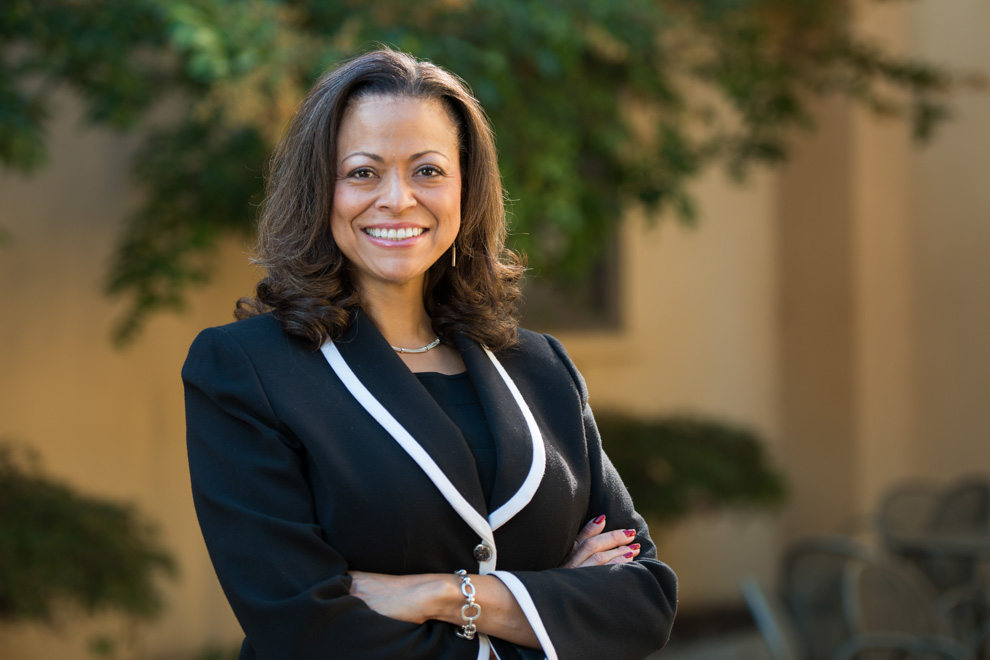Nicole Taylor ’90 M.A. ’91 has served as the associate vice provost and dean of community engagement and diversity since last fall. Her office oversees 10 community centers and offices on campus. Previously, she worked as the managing director of the Haas Center from 2006 to 2007 before leaving Stanford to work at other Bay Area nonprofits.
The Daily asked Taylor about her current role at Stanford and her ongoing discussions with the student group Who’s Teaching Us (WTU) surrounding diversity on campus.
Nicole Taylor (NT): Maybe it’ll be helpful if I tell you a little bit about my background, because I’m an alum … I saw a lot of what was happening on campus last year, and felt that maybe I could use my skills back at the place that I love, the place where I got my career launched … Of course I would only hear news reports of activism and what happened on the bridge and all of that and just felt really concerned. It was really feeling like I was being called to come back, if that makes sense.
The Stanford Daily (TSD): What do you do here at Stanford?
NT: Firstly, I serve as the leader of this [community engagement and diversity] unit. Right now we’re going through strategic planning to see how we can serve students better … I feel like I serve as the translator between administration and students, translating how each side feels about an issue and how we can come together … I am asked to weigh in on issues of diversity and inclusion, obviously at the students’ level, but oftentimes at the staff level. Staff from all over the University will ask advice or opinions on issues related to diversity. I get to work with offices all over campus around these issues, which is fantastic. The graduate recruitment work around recruiting diverse graduate candidates – a lot of the time, our unit is called into that. There’s a lot of different pieces of work that I get involved with.
TSD: How have you been involved with OpenXChange?
NT: OpenXChange was planned before I got here, but I have been intimately involved with it since I arrived … One of the hopes we have for next year is moving our unit in the spirit of OpenXChange, to create events and programs around these tougher issues and do them in places where students are. Our plan is to figure out the replacement during the summer so we can have good programs and events in place in the fall.
One of the things that I could not believe when I came back in the fall was how over-programmed this campus is. Every night, every day, seven days a week. Part of the challenge that we are trying to work through is, is it really just about adding more programs? Or is it about shifting programs that are currently in place? Just adding more programs doesn’t seem like it’s going to be effective.
TSD: What has the timeline of your interactions with Who’s Teaching Us (WTU) been like?
NT: We had a meeting with some of the leading students in WTU the day after the demands were issued. We needed action, we felt we couldn’t just sit on this. We felt we had to address the spirit of the demands, because we’re all committed to making Stanford a better place. By April 4, exactly three weeks after the letter of demands, we had our first working session. We’ve done a lot of work in a very short period of time.
TSD: Some of the demands from WTU asked for a lot, probably an unachievable amount. How do you balance that with making progress?
NT: There were some demands that we just couldn’t meet, for instance hiring based on race, gender or sexuality. That’s discriminatory and, not only that, it’s illegal … My colleagues and I realized quickly that we needed to focus on the intent behind those demands. What led students to really frame each of those demands, what led students to the five main concern areas behind the demands.
Some students said, we’ll just give you what to do, and you’ll sign off on it. We said no, because you actually need to understand how the University works. And the demands cover a big, wide set of areas, and in each area, there’s a whole set of processes that are different than the next area … We literally have to work at each major issue concern separately. Some students were more interested in some areas than others, and our process has allowed students that are most passionate about an area to sit down in the same room with the people who have the capacity … to make the changes that students would like to see.
What I’ve seen in every single meeting we’ve had so far, we’ve had six meetings now … We have been able to hear from the administration and faculty that are closest to those issues on what’s already in place or what’s already been planned, as well as hearing students’ personal stories, which are really important. It gives a level of insight that’s been really helpful. It’s allowed a productive level of conversation… for that understanding and learning to happen on the students’ side, but also for faculty and administration to understand the student experience.
Contact Regan Pecjak at [email protected].
